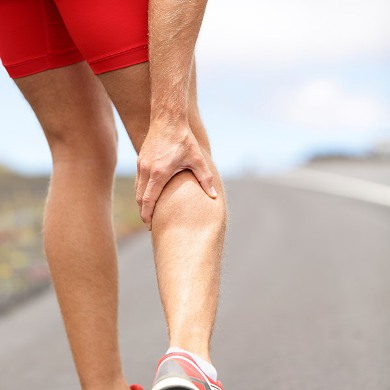Dealing with Leg Injuries
It’s true: after you get over that “ugh, this is awful” part when you first start to work on getting in shape, having to pace yourself is really hard. You’re filled with a newfound enthusiasm for your morning jog and your time in the gym and you want to be doing these things all the time. Having to go slowly and build up strength and muscle feels so boring. This stage of getting in shape is where most leg and other injuries happen. You push too hard too fast and something inside gets all messed up.
Hopefully, you’re lucky and you’re just dealing with a sprain or a strained muscle and not something more serious. Hopefully, the problem is straightforward and you’ll be back to your routine in a couple of weeks. Most of the time this is the case-especially if you take care of yourself and your injury properly. Here are some tips to help you do that.
Table of Contents
Doctors Orders
Follow whatever instructions your doctor has given you for your injury. Follow them perfectly. Your doctor knows what she is talking about and even if you start feeling better more quickly than anticipated, keep doing what your doctor has ordered for however long your doctor has ordered you to do it. Sure, keeping still when you feel okay is the pits, but jumping back into a workout routine too soon is a surefire way to re-injure yourself. And this time, the injury will likely be worse than the original.
Finding Comfort
If your injury is extreme your doctor may have prescribed you some painkillers to help you get through the recovery process. For everybody else, they usually have to rely on Tylenol or ibuprofen to dull the ache. Unfortunately, over the counter meds don’t always get the job done. So what do you do? Here’s a trick that we recently discovered: compression gear. Compression gear was originally invented to help people with blood clots reduce swelling and to prevent them from developing during long periods with no movement (like plane rides, long car trips, etc).
Recently, athletes have started using these pieces of clothing to prevent swelling and to increase blood flow during and after working out. Wearing compression products for women on your injured limb will increase blood flow while reducing pain and swelling to your injured leg. It sounds a little weird, but trust us. A lot of comfort can be derived from compression!
Learn to Love RICE
RICE stands for Rest, Ice, Compression, and Elevation. We’ve talked about compression already. Now let’s talk about the other three.
Rest: You don’t necessarily have to spend all of your resting time sleeping. You simply have to spend it off your feet. You can read, watch TV, even work remotely. But don’t push yourself too hard. The more time you spend sleeping and just relaxing, the better able your leg will be to heal. When we get stressed out our blood vessels can constrict and this could slow down your recovery!
Ice: Obviously this doesn’t literally have to be ice. Bags of frozen veggies, for example, are a much better approach. Yes, seriously! This isn’t some cliche made up for sitcoms that has caught on. The reason bags of frozen veggies (peas are best but use what you’ve got) is that they can easily be molded to fit the area of your injury.
Elevation: Keep your leg stretched out and propped up on pillows. And please note we said that your leg should be on the pillows not your foot (unless your foot is also injured). Propping your leg up on pillows takes weight off of it and lets it rest. It also increases blood flow.
Stretching
Once you start to recover, it is important that you help your leg muscles regain their length (muscles tend to bunch up when injured). The best way to do this is to start with slow and low impact stretches. For example, start by pointing your toes and holding them in that position for a few seconds. The minute you feel pain or exertion, stop. Build up from here.
Crutches
When you do need to move around, use crutches to support your weight. Do not try to put any weight on your leg, even if what you need is relatively closeby. You can rent crutches relatively cheaply and make sure you know how to use them. Your weight should not be supported at the armpits. Instead, your weight should be on your hands.
Basically, until you are fully healed, it’s Netflix and Rest. Thankfully there are a lot of great shows and movies just waiting for you to watch them! And, of course, you can still do simple arm and abdominal stretches to keep those muscles in shape!
